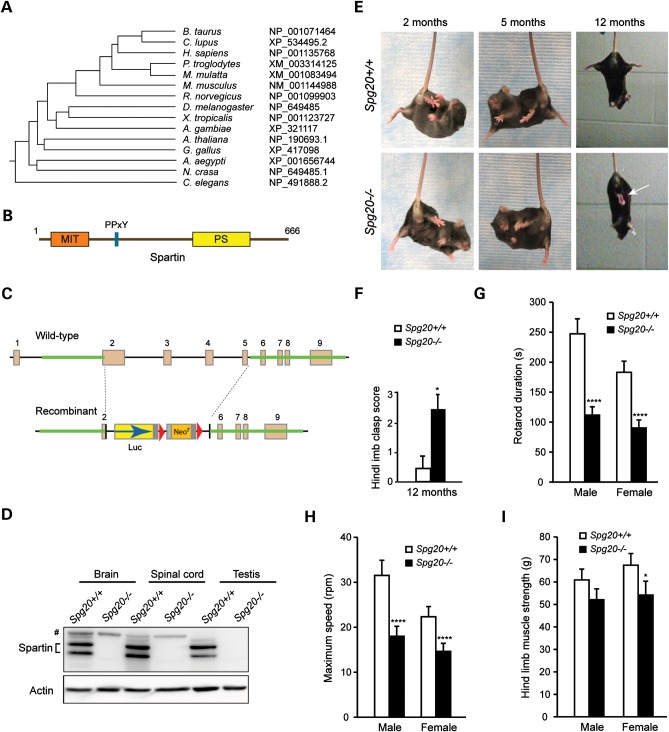Figure 1.
Generation of Spg20−/− knock out mice. (A) Spartin phylogenetic tree. Species and GenBank protein accession numbers are shown. The tree was constructed using ClustalW (v1.4). (B) Schematic diagram of spartin. MIT, present in microtubule-interacting and trafficking proteins; PS, plant-related senescence domain. Amino acid residue numbers are shown along the top. (C) Generation of Spg20−/− mice. Schematic representation of the Spg20 gene targeting strategy, with Spg20 exons numbered. Luc, luciferase; Neor, neomycin resistance. (D) Immunoblot analysis of spartin protein in brain, spinal cord and testis lysates from adult Spg20+/+ and Spg20−/− mice. Actin levels were monitored as a control for protein loading. # denotes a cross-reactive protein band. (E) Suspension reflex testing of Spg20+/+ and Spg20−/− mice at 2, 5 and 12 months of age. An arrow denotes clasped hind limbs. (F) Quantification of hind limb clasping at 12 months (means ± SD). Scores were tallied after suspending mice by the tail: 0, normal; 1, hind limbs touching for 1–15 s; 2, hindlimbs touching for 16–30 s; 3, hindlimbs touching for >30 s. (G and H) Rotarod testing of Spg20+/+ (n = 24) and Spg20−/− (n = 44) mice at 4–7 months of age, with quantification of duration (G) and maximum speed (H), means ± SD. (I) Hind limb muscle strength was quantitated in Spg20+/+ and Spg20−/− mice at 4–7 months of age (n = 24 and 44, respectively). *P < 0.05; ****P < 0.001.

